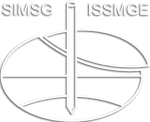Using hydraulic profiling tool (HPT) to define permeability zones by k-means clustering
Using hydraulic profiling tool (HPT) to define permeability zones by k-means clustering
Many direct push tools have been developed in the past two decades for assessing the hydraulic conductivity (k) of soils at high resolutions, such as the DP slug test (DPST), DP permeameter (DPP), and DP injection logger (DPIL). A continuous form of DPIL is the hydraulic profiling tool (HPT) which provides qualitative estimates of permeability based on flow-pressure (Q/Pc) ratio at cm-scale resolution. Additional measurement of bulk soil electrical conductivity (EC) provides supplementary information about the soil type. HPT has been extensively compared and found to be in good agreement with laboratory and field methods which provide absolute k values. However, very few studies have compared the HPT permeability information with CPTu-based SBT classification, that too in saturated soils only. This study classified HPT profiles using EC and Pc into low/medium/high permeability zones by k-means clustering and compared them with SBT classification for unsaturated and saturated soils. In both cases, the high and low permeability zones identified by HPT generally coincided with coarser and finer soil layers based on SBT, respectively. Pc contributed more to defining clusters than EC, although EC provided vital information on water content, especially for unsaturated soils. Furthermore, saturated k values derived from HPT and CPTu were compared to find that the former provided lower values by one order. These results show that HPT and CPTu can be used together for rapid preliminary assessment of low/high permeability zones.
Keywords: Hydraulic profiling tool (HPT), direct push injection logger (DPIL), high-resolution characterization, hydraulic conductivity
P. Singh; D. Kumar Haritwal; G. V Ramana; Manoj Datta
9th International Congress on Environmental Geotechnics (ICEG2023)
Advances in Geoenvironmental Field Characterization
https://doi.org/10.53243/ICEG2023-175
